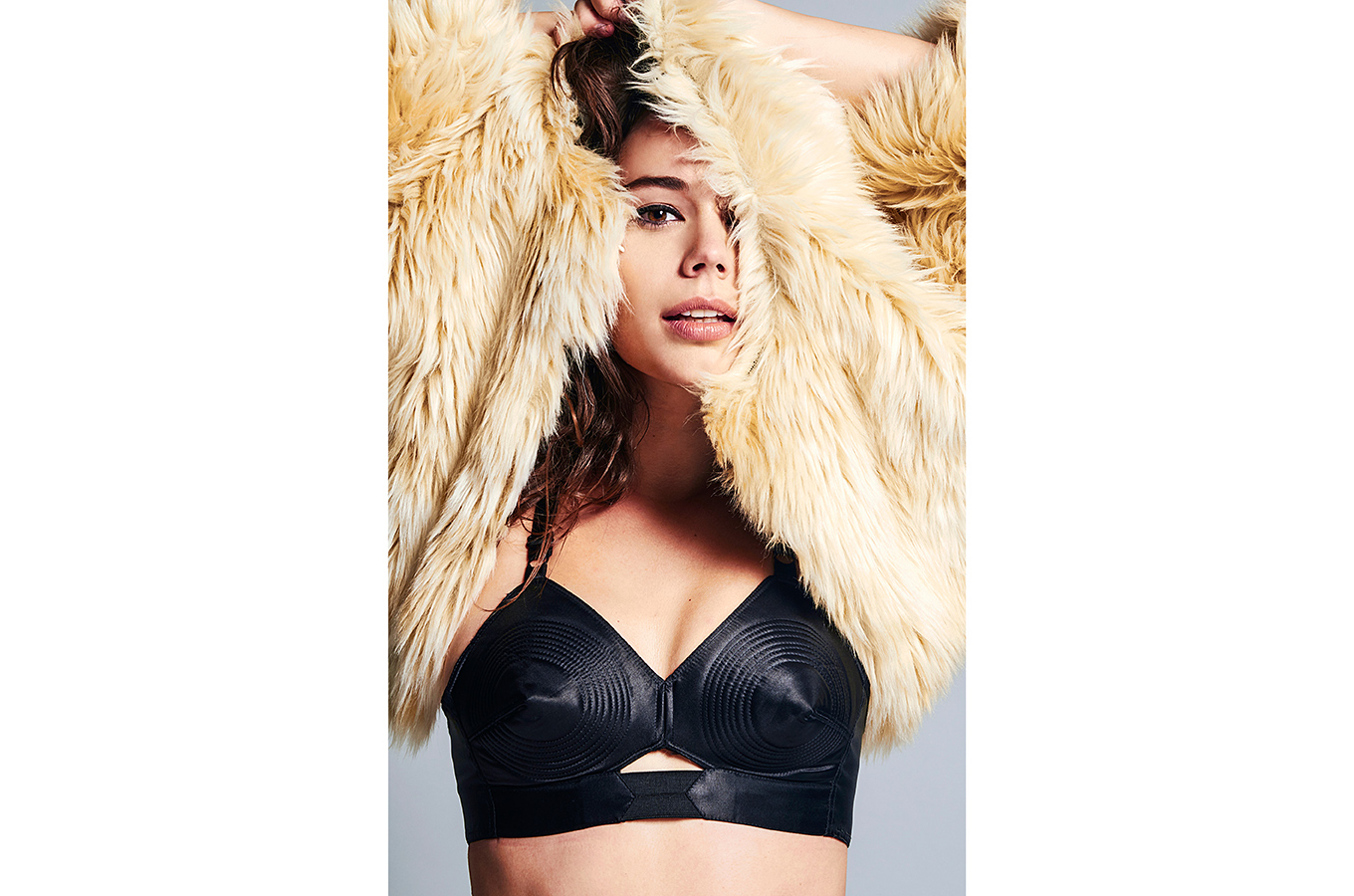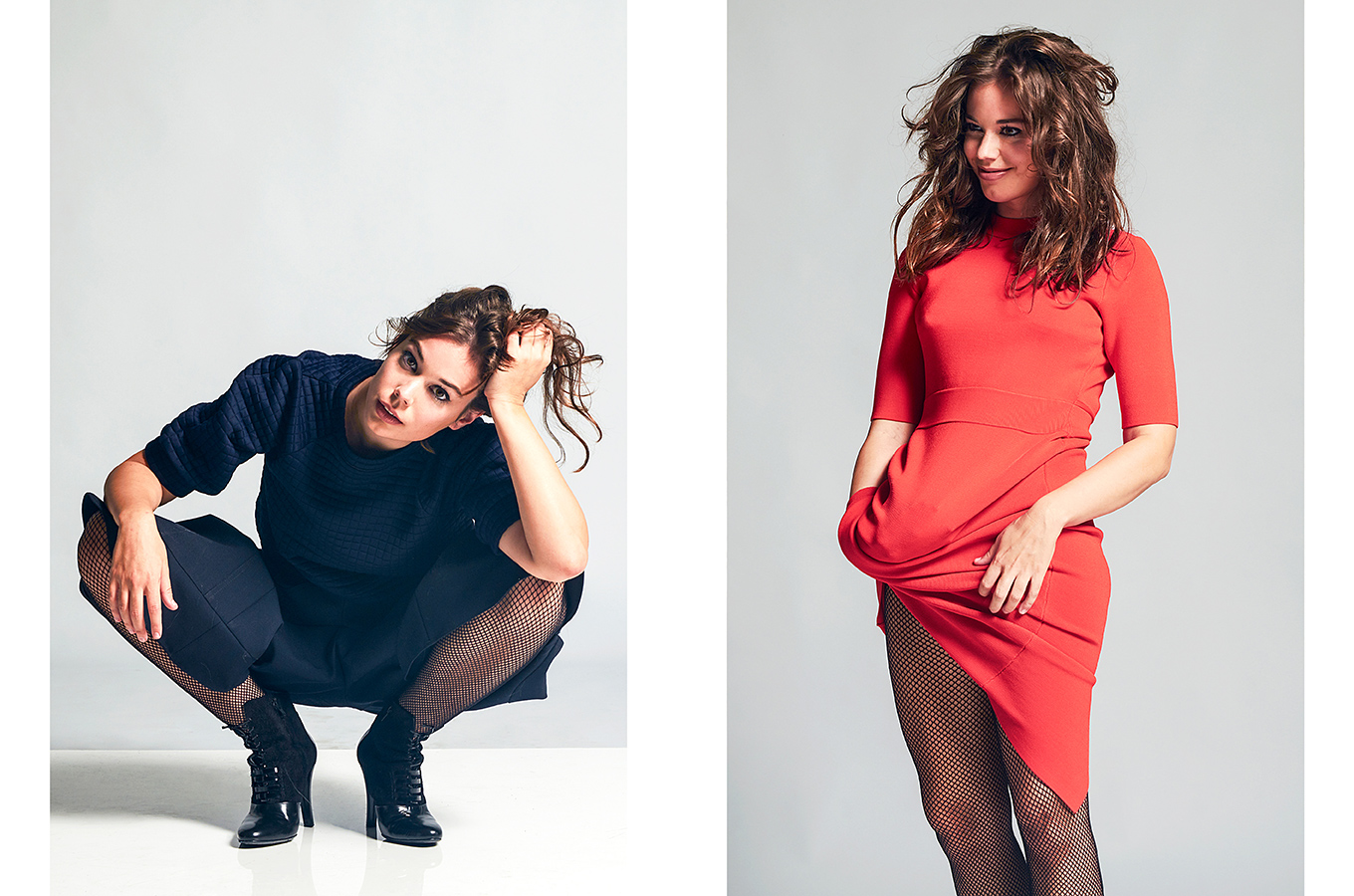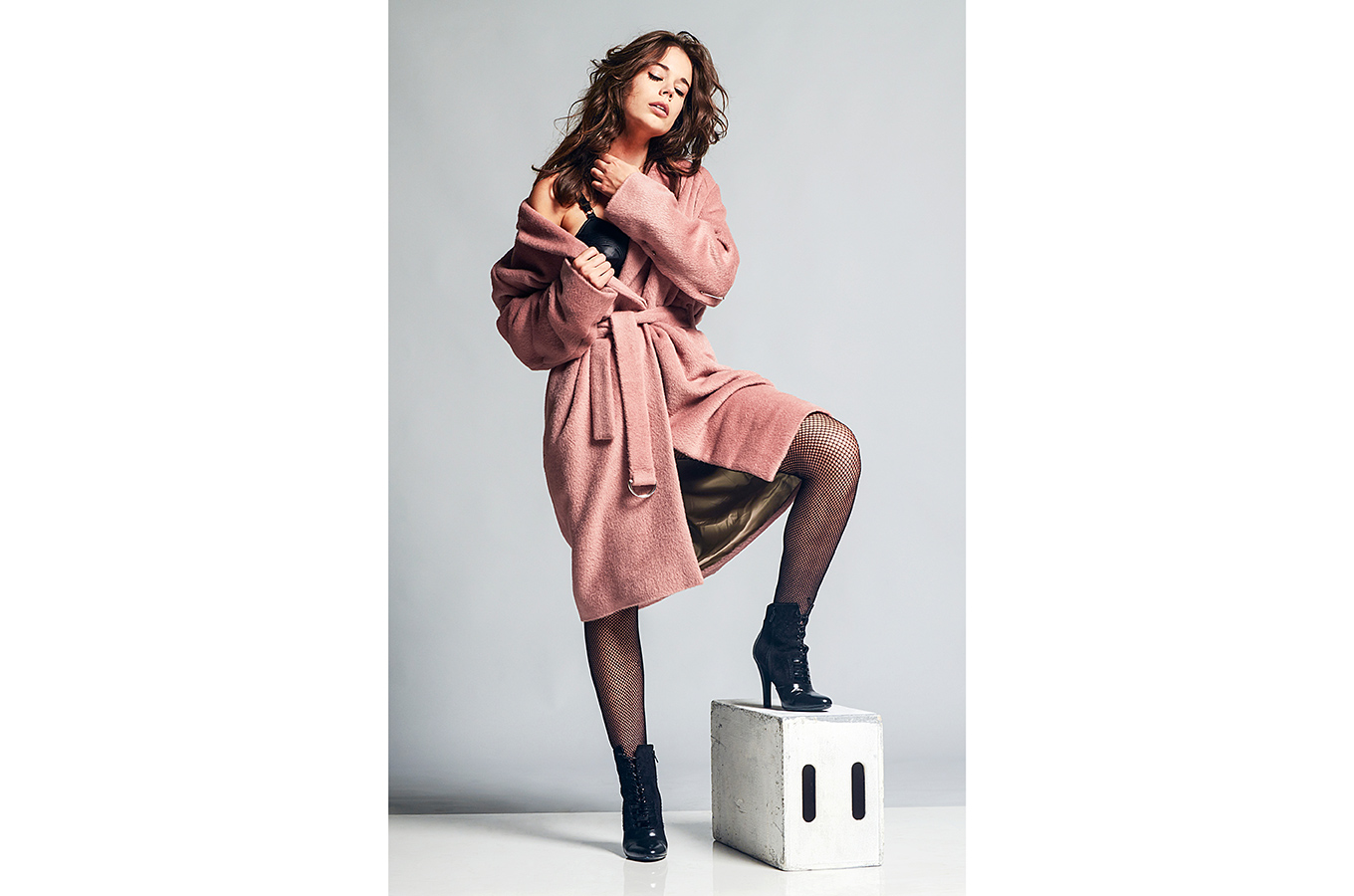Laia Costa
Inverview by Sturla Brandth Grøvlen
Images by Jan-Willem Dikkers
Styling by Lisa Mosko
Hair by Makiko Nara using Bumble & Bumble
Makeup by Dina Gregg for Chanel
“I WAS NEVER SCARED TO MAKE A MISTAKE BECAUSE I WAS VICTORIA,
AND SHE COULD BE SCARED, WORRIED, OVERWHELMED
OR WHATEVER SHE NEEDED TO BE. I WAS SO IN CHARACTER I COULD
—LAIA COSTANOT EVEN THINK AS MYSELF IN ANY MOMENT.” — LAIA COSTA
Laia Costa
Born in Barcelona, Spain, actress Laia Costa is the lead in Sebastian Schipper’s film Victoria, for which she received Best Performance by an Actress in a Leading Role at the German Film Awards. The New York Times includes her in 2015’s “Breakthrough Performances of the Fall Season.” Costa’s past credits include Fort Ross (2014) and Palm Trees in the Snow (2015), as well as season two of the series Red Band Society.
Sturla Brandth Grøvlen
Norwegian cinematographer Sturla Brandth Grøvlen is known for his work on Victoria, for which he won Outstanding Artistic Contribution at the Berlin International Film Festival as well as the German Film Award for Best Cinematography. He is also recognized for Rams (2015), Venus (2010) and The 11th Hour (2014), through which he met Sebastian Schipper.
Victoria
Directed by Sebastian Schipper and filmed in one continuous take, Victoria is a crime drama about a young Spanish woman’s night out in Berlin turned deadly as innocent flirtation becomes assisted bank robbery. The film won three awards at the 2015 Berlin International Film Festival, was nominated for the Golden Berlin Bear and received six German Film Awards.
Sebastian Schipper
German actor and filmmaker Sebastian Schipper is known for his roles in Run Lola Run (1998), The English Patient (1996) and Three (2010), and for directing A Friend of Mine (2006), Sometime in August (2009), and the award-winning films Gigantics (1999) and Victoria.
Frederick Lau
Frederick Lau is a prolific German actor known for playing Sonne in Victoria, for which he won Best Performance by an Actor in a Leading Role at the German Film Awards. He also won Best Supporting Actor for Die Welle (2008).
Victoria is two hours and eighteen minutes long and filmed in a single take. More than an eccentricity or gimmick, this technical feat becomes the driving force of the film. The camera sweeps after the young Spanish Victoria, through Berlin’s techno underground and out onto the streets as she embarks on the most daring night of her life with four complete strangers. What begins as revelry pitches into Greek tragedy as the camera becomes another member of the gang, watching in real time while amusement turns to horror.
Victoria garnered accolades at the Berlin Film Festival and more, amassing major awards for German director Sebastian Schipper, cinematographer Sturla Brandth Grøvlen and actor Laia Costa, who stars as Victoria. The film marks a sea change in the careers of Grøvlen, a Norwegian, and Costa, a Catalonian, who joined Schipper to create a film that evokes the vivacity and shadows of modern Europe at night. Victoria’s dialogue showcases its cosmopolitan cast, alternating between German and English as they maneuver the streets of Berlin.
Grøvlen and Costa corresponded back and forth about the singular experience of making Victoria, its audacious one-take and their continual script improvisation.

Sturla Brandth Grøvlen: I remember Sebastian Schipper calling me and enthusiastically proclaiming, “We found her! We found Victoria, and she’s absolutely great!” He sent me a link to a screen test with you and Frederick Lau in a hotel room in Barcelona. I was amazed by you and Freddie together. It gave me a lot of confidence that this could actually work. What was your feeling after you first met with Sebastian, and he explained his ambition with Victoria to you? How did the screen test affect your feeling about the project?
Laia Costa: The screen test was funny, although I had to spend two days in the hospital one week before because of a motorbike accident. It worked out so well, and I had a lot of chemistry with Freddie. It was an adventurous casting—we had to improvise some situations in the hotel bar and the hotel room, but they were not from the film. A couple of days later I was sitting with Sebastian and he was not able to explain too much about the project. I think he didn’t know yet what to explain to me because the film process was an alive thing. He might have known that anything he said at that moment could change later. Like the title of the film: first it was called One, Two, Five, Eight; later One Driver, Three Guys; later She Drives; then My Name is Victoria; and finally Victoria. I have the feeling Victoria was not even the lead role at the beginning, but the process and the work of the script team [eventually] put her in the center of the story. That is the magic of Sebastian’s work too: the film was an open and creative project from the beginning to the last day.
I remember how in shock everyone was before and after shooting the one-take. Sebastian was silent. He ran away and went home once the take was done, and spent two or three days saying nothing to us. The guys were so excited before it, and after they felt like, “What the hell happened? Isn’t it crazy? Let’s do it again!” The actors, all of us, had an amazing time during the three one-takes. I have never had fun like this in front a camera before.
The only single person who was really calm was you. Maybe not inside, but your presence there was giving us a lot of confidence before the one-take—just looking at you, calmly doing your exercises so you could physically do the two-hour-long single shot. I also remember we had lot of great talks about some scenes. That’s what I loved most about the process: we were all working on it, together, hand by hand like a real team.
And I was happy that you, Olivia, Eike and Jan were watching the material after filming and making decisions to carry out in the next rehearsal, the next take. I felt saved because I knew that if you could watch it, we could improve it later. How were those screenings where you saw the material? Were the decisions easy to make? And how was it to see your work on the screen? I did not realize your amazing, crazy work until the Berlinale premiere. And there I saw that you were cameraman, actor, director and scriptwriter altogether. Was it difficult for you to improvise with us? Because I completely forgot about you after the “Action!”
“I forgot about me after ‘Action’ as well.
I felt very much a part of the gang.
I have never been so tapped
in on the energy of a cast before.”
— Sturla Brandth Grøvlen
SBG: It is great to hear you talk about how the process was such an unique and living thing. For me it was really interesting to develop the script while we were shooting, and then shoot the film three times before we were finished. I guess it can be compared to being part of the editing process—which you and I normally never are a part of—wouldn’t you say?
I never felt that it was difficult to improvise with you guys. I forgot about me after “Action” as well. I felt very much a part of the gang, and I have never been so tapped in on the energy of a cast before. I knew that you would not leave me behind, that you would create space and help me out if I needed to catch a specific moment. There was a lot of trust between all of us. Seeing my work was extremely scary. I didn’t feel comfortable about my work until you wrote me an email after having seen the teaser. You were raving about it. That gave me a lot of confidence.
I think you’re right—the thing that would change most during the rehearsals was your character. Sebastian, Eike and Olivia in particular worked hard together with you to create this strong character who could drive the film forward. It must have been such a challenge for you. Can you tell me a little bit about how you got to know Victoria? Did she become closer or further from your own personality as the character developed?
LC: Yes, I remember. It was crazy, the 12-minute [teaser] we saw the last days in Berlin. Your work is amazing and you should have more ego, my friend, because you did the one-take! But that was also a nice thing between the crew: there was no ego at all and everyone was a family on the set. Everyone knew exactly what was going on in the locations during the rehearsals.
Victoria is completely different from me. When I saw the film for the first time in Berlinale, I felt a bit disappointed with her because she is so shut in. We see her have really extreme and different emotions just twice: crazy happiness and painful grief. But the rest of the time she is keeping her feelings hidden so hard, trying not to show her loneliness. That differs a lot from me because I am more outgoing and of course I don’t have her background. My boyfriend said to me, “I like the film because you don’t seem you.” So I asked him really worried, “Yeah, well, do you like her?” And when he said, “I can understand her and know what’s going on in her mind all the time,” I felt relieved. So maybe sometimes we cannot judge our own work. We need the clean eye of someone who has never seen it—like David did with mine and I did with yours. And of course we should trust the big boss Schipper’s eye.
The rehearsals gave me the chance to work with different options and find 20 different Victorias, even opposite ones. We didn’t want to be superficial with the common story about ‘a good girl becoming bad.’ That’s not what Victoria is about. So we were working on very different faces of her and then choosing the ones that were more interesting. I worked a lot on her background; watching several documentaries about little geniuses who have played the piano since they were three years old, and the kind of lives they have later. That helped me to understand why she runs away from home and decides to be in Berlin. And I could find her deep motivations to carry on with this crazy night, even when things are getting worse than ever.
The film doesn’t explain the characters’ backgrounds, just a bit in the piano scene, but we worked a lot on them. Also the guys—Freddie was calling Sebastian in the middle of the night asking him really upset, “Why should Sonne rob a bank? It makes no sense!!” And he was right because these street boys are not stupid. They won’t rob a bank if they can rob a shop; it is less dangerous. So that question made everyone think about their reasons to rob the bank, and we realized they could do it just for friendship and loyalty to their family and friends. It was not about money. And that makes sense.
I loved Sebastian’s rules about the acting in this project: “You cannot repeat the same action, ever. You have to go through the scene, but always in different ways. Even if it is no good. Never, never repeat a sentence, an action. Keep it real.” That made me discover Victoria so deeply, and at the end of the process I mixed the 20 Victorias I had found. There were just two fixed things in the entire movie: the Spiderman kiss in the club stairs and Victoria’s reaction in the hotel. But the other stuff is fresh right-here-right-now. I have the feeling that no one is gonna give me the opportunity to shoot this way again.
You know what? I would love to see a jump-cut version also. Because you can find magic moments in all of the three one-takes we did. And I would like to see a jump-cut version just full of magic moments. Or see the same scene three times in three different ways. That could be a beautiful film exercise. What do you think about that? Could a jump-cut version be an interesting format for Victoria? Which was your favorite one-take? Freddy and I loved the second one. Don’t ask why because we don’t know, but we were saying it all the time.
“I loved Sebastian’s rules about the
acting in this project:
‘You cannot repeat the same action, ever.
You have to go through the scene,
but always in different ways.’”
— Laia Costa
SBG: I was very happy about the first one-take, just the fact that we managed to pull it off made it successful for me, and I thought it could only become better. For me the first take was technically the best. The last was the worst technically, but I am quite happy about the third take. Just the chaos of the getaway after the bank robbery! You were driving and both the boys and Sebastian were shouting “Faster! Slower! Right! Left!” I actually felt scared and my adrenaline was pumping! We almost ruined the take by driving straight into craft services and the whole SWAT team that was waiting for their scene. I like that it has a lot of these crazy uncontrollable moments. Were you scared at any time during the shooting?
I am not sure I would like to see a jump-cut version, just because I don’t want to break the illusion of what we did. I guess we never saw the success of Victoria coming, but it sure has opened a lot of doors for me. I am certain that it has opened many doors for you as well. I remember I was going off to Iceland to shoot Rams after we wrapped Victoria, and you told me that I was probably going to be bored by shooting something conventional. Do you find that the challenge of Victoria was so extreme that all other projects fade in comparison?
LC: I was never scared to make a mistake because I was Victoria, and she could be scared, worried, overwhelmed or whatever she needed to be. I was so in-character I could not even think as myself in any moment. That’s the difference: you had to be in control and I didn’t. Or at least a different kind.
I guess right now we imagine a conventional filming process could feel boring for us. But I know how we are, and we are gonna try to put our whole soul in every new adventure. That’s our shoot of adrenaline. And if it isn’t, we can always call each other and go for One More Take.
Sturla, I would love to work with you again, but like we did in Victoria, dancing together with a camera in between.
SBG: We will dance again someday.










